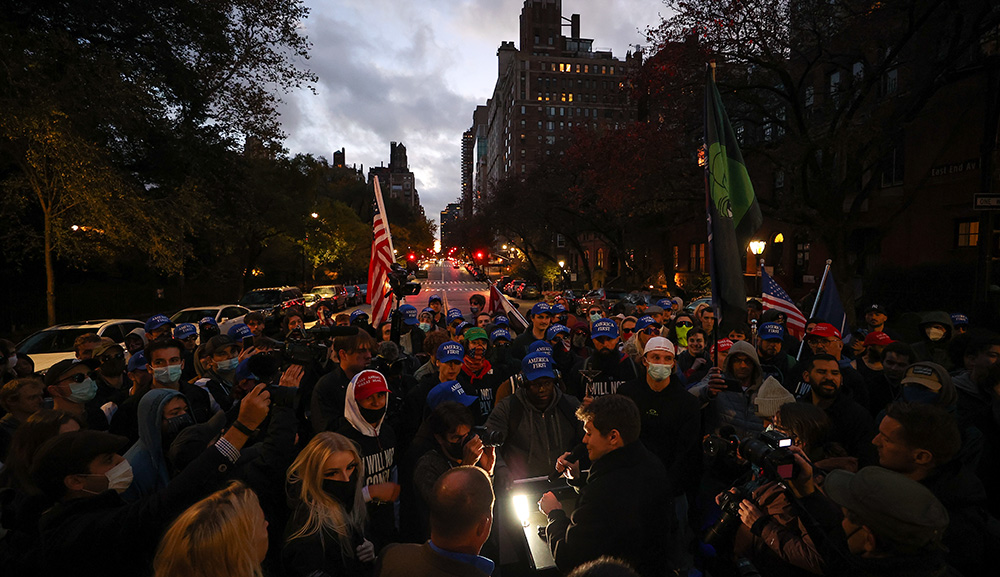Today is the minor but joyous Jewish holiday of Tu b’Av, the fifteenth day of the month of Av, which according to the Talmud is significant for six reasons. Among these is that it marks the day when, in ancient times, members of the tribe of Benjamin were allowed to intermarry with the other Israelites—a reference to the story told in the concluding chapters of the book of Judges. This episode begins when a gang of Benjaminite hoodlums rape and murder a woman passing through their tribe’s territory; thereafter the tribal elders refuse to bring the perpetrators to justice. A bloody civil war follows that concludes with the other eleven tribes taking an oath not to give their daughters in marriage to the Benjaminites. After some time, the other tribes’ elders relent and concoct a scheme whereby the men of Benjamin can ambush maidens from other tribes while they dance at an annual festival in Shiloh, and then carry them off as brides. Tzvi Sinensky attempts to make sense of this episode and its relevance to Tu b’Av:
[The Talmud states that] “there were no days as joyous for the Jewish people as the fifteenth of Av and Yom Kippur, as on them the daughters of Jerusalem would go out in borrowed white clothes, so as not to embarrass one who did not have, . . . and perform a circle dance in the vineyards. And what would they say? ‘Young man, please lift up your eyes and see what you choose for yourself . . . ’”.
[T]he parallels [to the story in Judges] are unmistakable: girls dancing in vineyards in the location of the Holy Ark (Shiloh or Jerusalem) during a holiday [followed by the formation of marital bonds]. Reinforcing these striking similarities, the Talmud uses turns of phrase that closely parallel those in Judges. . . .
To begin, let us analyze the elders’ decision to encourage Benjaminite men to “snatch” women from the festival at Shiloh. Does the text judge the elders positively or negatively? It is hard to know for sure. On the one hand, their motivation seems to be positive: they seek to salvage the [depopulated] tribe of Benjamin. On the other hand, the verses’ language carries numerous negative associations. The text uses such words as ambush, grab, and rob, which carry negative associations [in Hebrew as well as English]. What is more, broadly speaking, it seems clear that the story is not intended exclusively as a negative commentary on the tribe of Benjamin; Benjamin’s despicable behavior is simply indicative of a larger moral breakdown in Israelite society. . . .
As the book of Judges concludes, “In those days there was no king in Israel; everyone did as he pleased.” It therefore seems highly plausible that the text means to criticize the elders’ decision to ensure a tribe’s survival at the expense of women who were kidnapped and coerced into unwanted marriages. . . . Just as the tragedy of the rape features the brutalization of a vulnerable woman, so, too, the biblical dancing festival involves the “snatching” of vulnerable women who had gathered in Shiloh. . . .
In sharp contrast to the tale of the murdered concubine, the Talmud emphasizes that on Tu b’Av . . . the women seize the initiative in soliciting the men. Moreover, as opposed to the incident in Judges, in which women were taken en masse, the Talmud explains that different women emphasized their unique qualities [in advertising themselves to their potential mates]. If the end of Judges features females who are treated as vulnerable, faceless objects, this talmudic passage, as [the 19th-century ḥasidic master] Tsadok of Lublin observes, offers a vision of self-assured young women who take initiative and distinguish themselves as individuals.
More about: Book of Judges, Marriage, Religion & Holidays, Talmud, Tu b'Av


